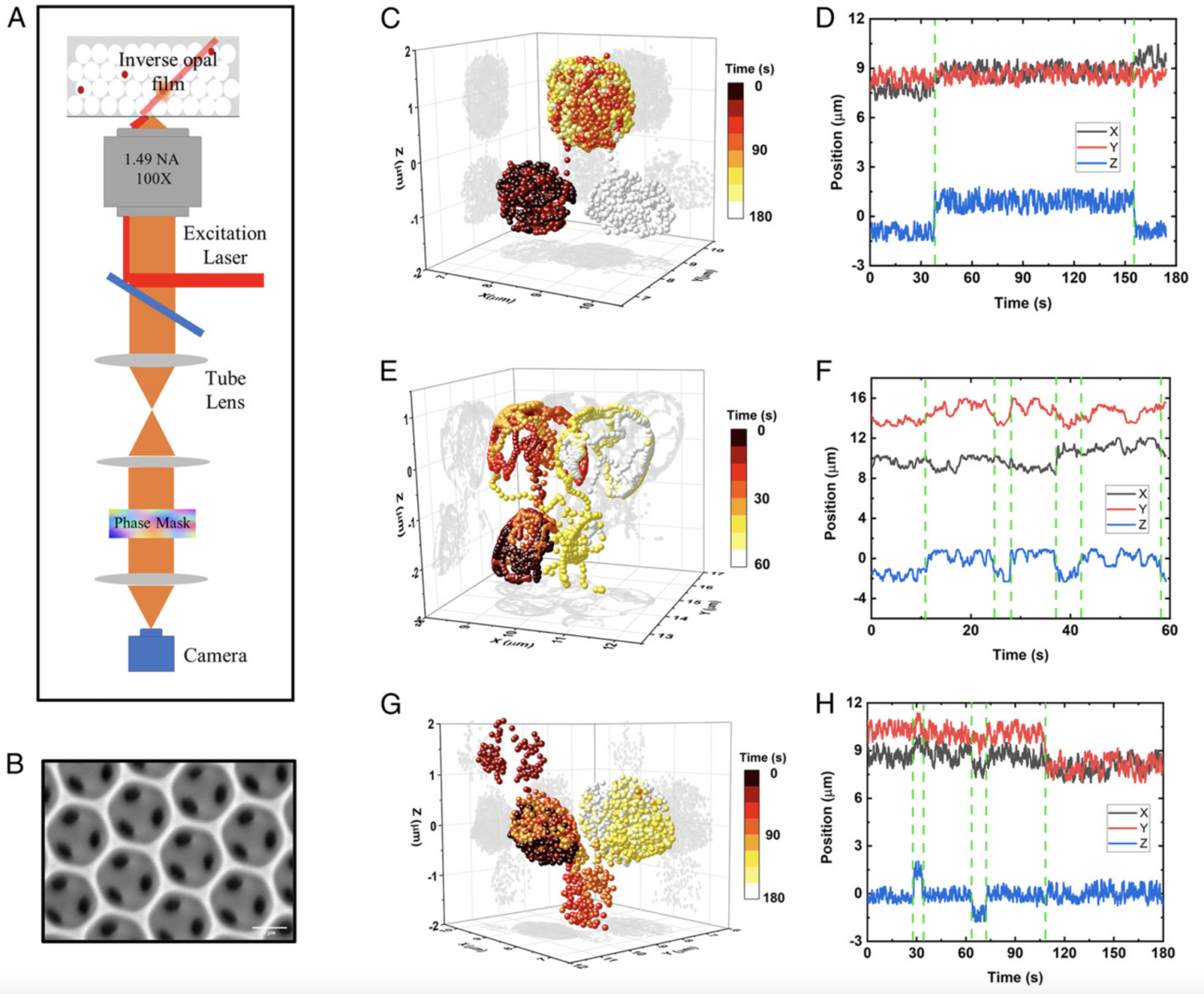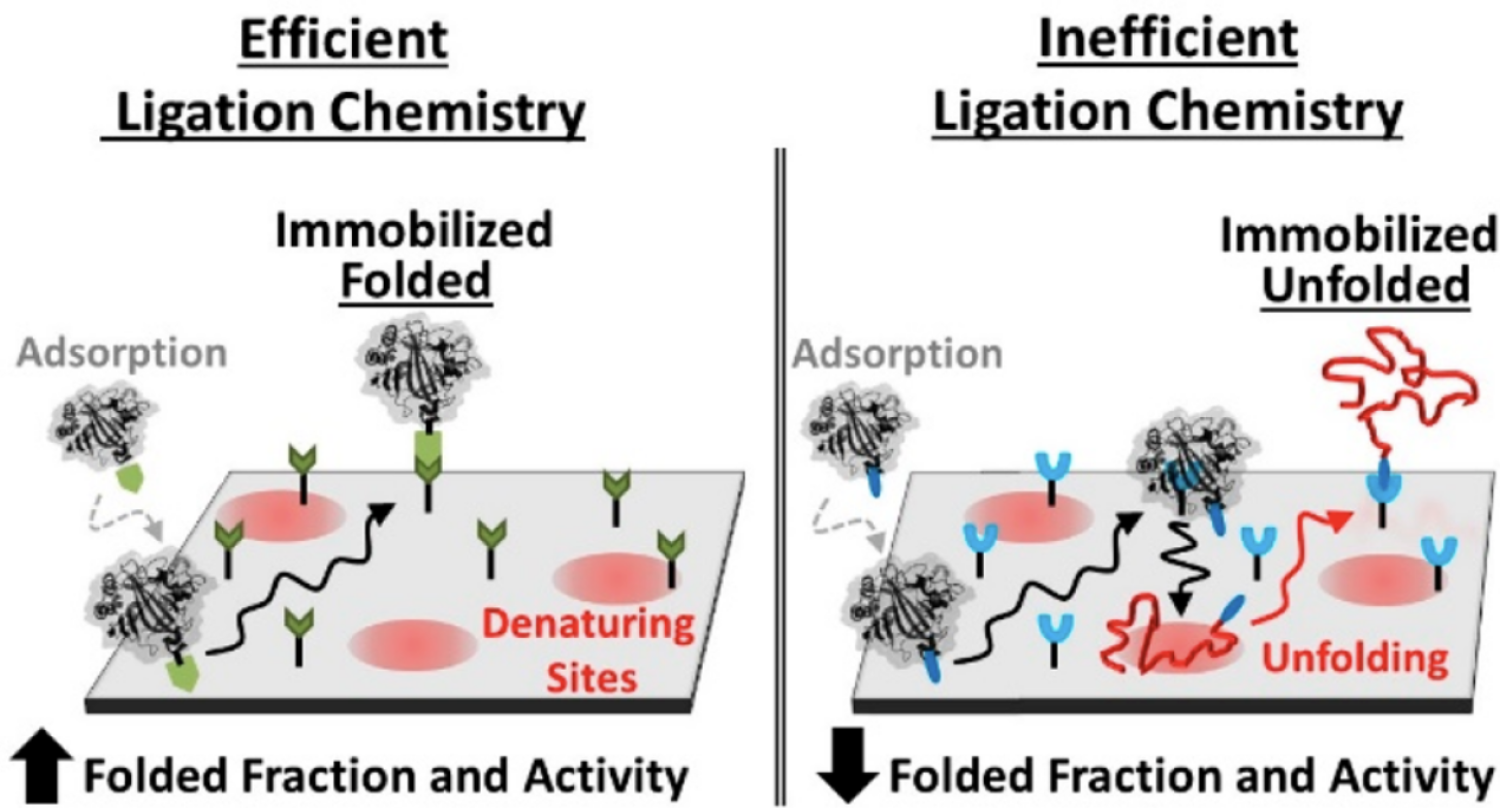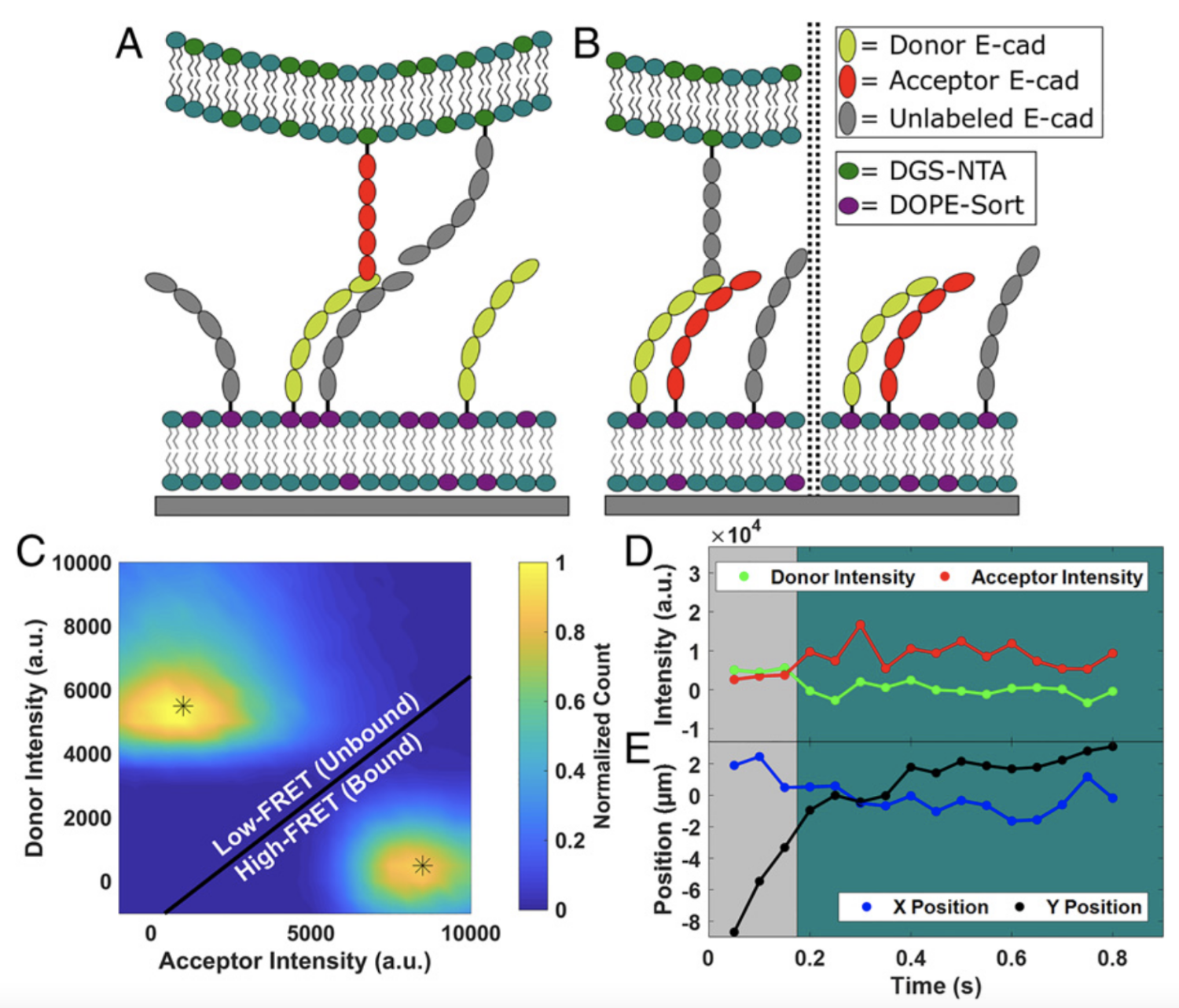Home
Welcome to the Schwartz Research Group!
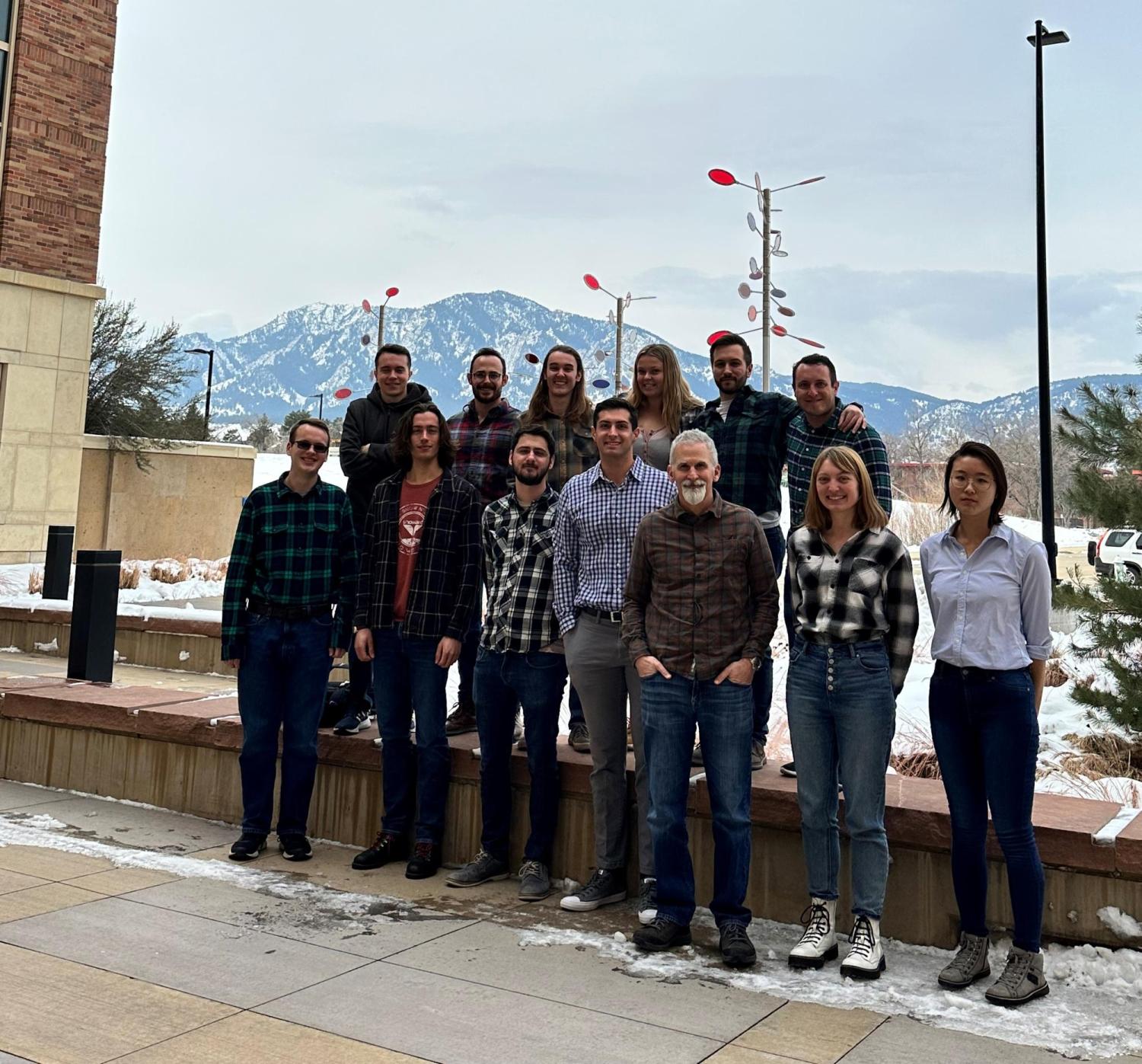
The Schwartz Research Group at CU-Boulder is broadly interested in interfacial science. Our group's expertise spans multiple skillsets, including syntheses of new materials, state-of-the-art spectroscopic characterization, machine learning-based data analysis and computational simulations.
We are leading the way in analyzing interfacial behavior using single-molecule techniques as well as investigating chemically modified catalysts. This includes leveraging single-molecule imaging techniques to determine molecular behavior at solid-liquid interfaces, dynamics in confined environments, and interactions between biomolecules and surface modifications.
See https://youtu.be/TOgszd0C4Gc for an introduction on what it is like being in the Schwartz Research Group. Don't hesitate to reach out if you are interested!
General Interests
- Dynamics of (bio)molecules at interfaces
- Molecular targeting (biosensing)
- Diffusion in confined environments
- (Catalytic) surface modification
Latest Research Highlights
PNAS: Mechanisms of transport enhancement for self-propelled nanoswimmers in a porous matrix
Micro/nanoswimmers convert diverse energy sources into directional movement, demonstrating significant promise for biomedical and environmental applications, many of which involve complex, tortuous, or crowded environments. Here, we investigated the transport behavior of self-propelled catalytic Janus particles in a complex interconnected porous void space, where the rate-determining step involves the escape from a cavity and translocation through holes to adjacent cavities. Surprisingly, self-propelled nanoswimmers escaped from cavities more than 20× faster than passive (Brownian) particles, despite the fact that the mobility of nanoswimmers was less than 2× greater than that of passive particles in unconfined bulk liquid. Combining experimental measurements, Monte Carlo simulations, and theoretical calculations, we found that the escape of nanoswimmers was enhanced by nuanced secondary effects of self-propulsion which were amplified in confined environments. In particular, active escape was facilitated by anomalously rapid confined short-time mobility, highly efficient surface-mediated searching for holes, and the effective abolition of entropic and/or electrostatic barriers at the exit hole regions by propulsion forces. The latter mechanism converted the escape process from barrier-limited to search-limited. These findings provide general and important insights into micro/nanoswimmer mobility in complex environments.
JACS: Faster Surface Ligation Reactions Improve Immobilized Enzyme Structure and Activity
During integration into materials, the inactivation of enzymes as a result of their interaction with nanometer size denaturing “hotspots” on surfaces represents a critical challenge. This challenge, which has received far less attention than improving the long-term stability of enzymes, may be overcome by limiting the exploration of surfaces by enzymes. One way this may be accomplished is through increasing the rate constant of the surface ligation reaction and thus the probability of immobilization with reactive surface sites (i.e., ligation efficiency). Here, the connection between ligation reaction efficiency and the retention of enzyme structure and activity was investigated by leveraging the extremely fast reaction of strained trans-cyclooctene (sTCOs) and tetrazines (Tet). Remarkably, upon immobilization via Tet-sTCO chemistry, carbonic anhydrase (CA) retained 77% of its solution-phase activity, while immobilization via less efficient reaction chemistries, such as thiol-maleimide and azide-dibenzocyclooctyne, led to activity retention of only 46% and 27%, respectively. Dynamic single-molecule fluorescence tracking methods further revealed that longer surface search distances prior to immobilization (>0.5 μm) dramatically increased the probability of CA unfolding. Notably, the CA distance to immobilization was significantly reduced through the use of Tet-sTCO chemistry, which correlated with the increased retention of structure and activity of immobilized CA compared to the use of slower ligation chemistries. These findings provide an unprecedented insight into the role of ligation reaction efficiency in mediating the exploration of denaturing hotspots on surfaces by enzymes, which, in turn, may have major ramifications in the creation of functional biohybrid materials.
PNAS: Cadherin cis and trans interactions are mutually cooperative
Cadherin-mediated intercellular adhesion involves both cis and trans interactions between cadherin extracellular domains. It has been hypothesized that the combination of these cis and trans interactions is critical for the formation of macroscopic adhesions. Here, we have used single-molecule microscopy to show that cis and trans interactions are mutually cooperative, in that cis interactions directly increase the stability of trans bonds and trans interactions similarly increase the stability of cis bonds. Furthermore, we show that this cooperativity directly results in cadherin accumulation to form macroscopic intermembrane junctions. This cooperativity occurs at the molecular level and suggests that trans dimers are allosterically stabilized by individual cis interactions. These results provide mechanistic insight into cadherin junction assembly, independent of cytoplasmic interactions.
News
New members in the Schwartz Group (Fall 2022)
First-year graduate students David Kelaita, Ian Wyllie, Sami Eyolfson and Zachary Meduna join the Schwartz lab. They will be working on immobilized enzyme cascades, mass transport in porous media, single-atom catalysts and polymer crystallization, respectively. Welcome all!
Congratulations to Ben!
Ben Greydanus successfully defended his dissertations in August, 2022.
New member in the Schwartz Group (Fall 2021)
First-year graduate student Samuel Kennedy joins the Schwartz lab (co-advised by Joel Kaar). He will be working on stabilizing enzymes in biphasic materials for the manufacturing of mRNA. Welcome Sam!
Congratulations to Connor and Haichao!
Connor Thompson and Haichao Wu successfully defended their dissertations in June, 2020.
Haichao's work featured in cover.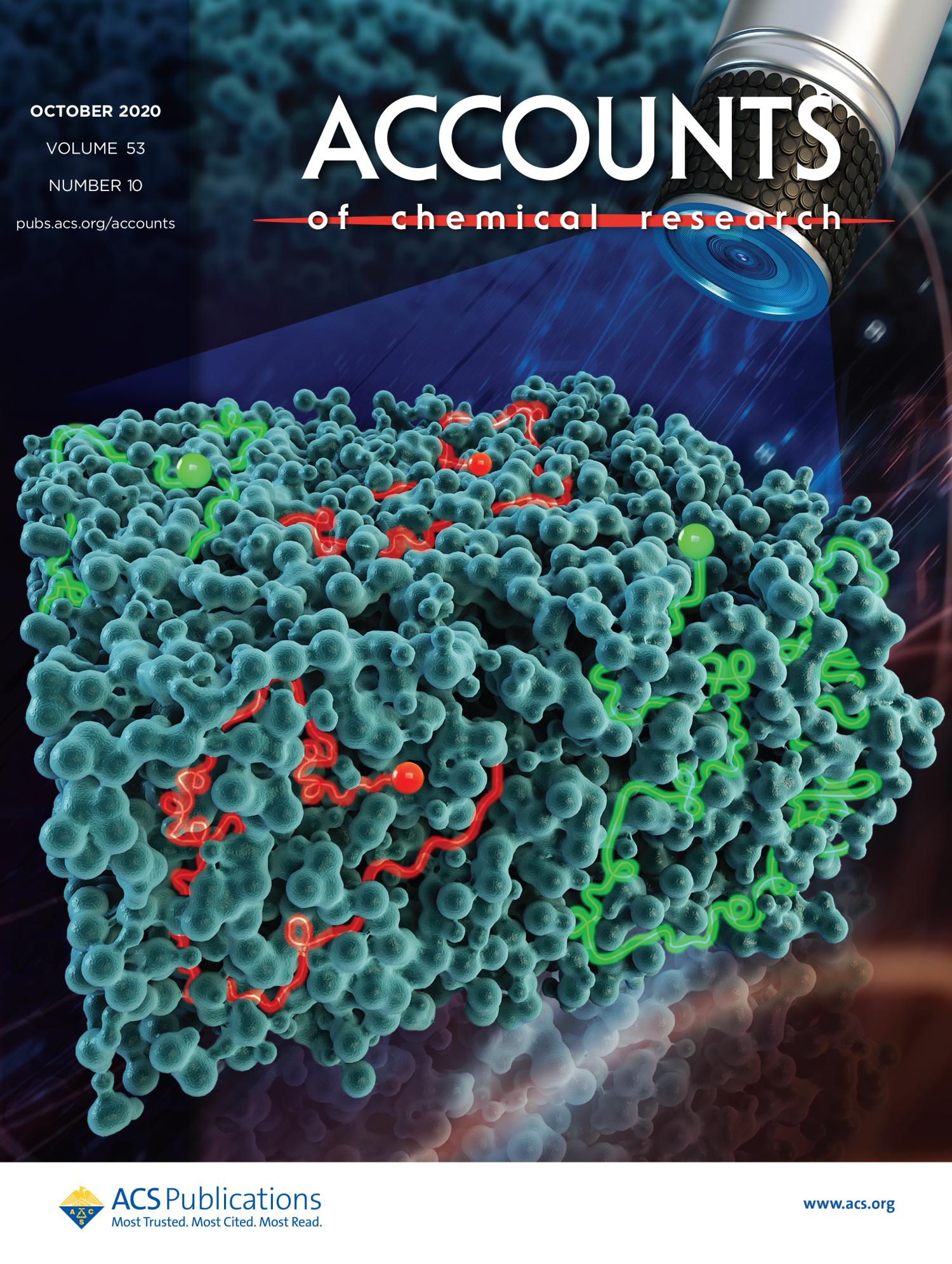

Haichao's work got featured in the cover of Accounts of Chemical Research! Outstanding!
Congratulations to Greg and Andres!
Greg Morrin and Andres Chaparro Sosa successfully defended their dissertations, respectively, in December, 2020 and March, 2021.
New Students Join the Group
Again, three first-year graduate students joined the Schwartz Group this year: Holly Coleman (co-advised with Joel Kaar and Ted Randolph), Victoria Reichelderfer (co-advised with Joel Kaar), and Alexander Kanora.
Welcome to the Group, Albert, Ezra, and Hector!
Three first-year graduate students joined the Schwartz Group this year: Albert Velasco Abadia (co-advised with Joel Kaar), Ezra Baghdady (co-advised with Will Medlin), and Hector Sanchez-Moran (co-advised with Joel Kaar).
Congratulations on the Defenses!
Kate Macri, James Weltz, and Jeremiah Traeger successfully defended their dissertations.
New Postdoc
Ellen Knapp has just joined our group as a postdoctoral researcher. We're glad to have you, Ellen!
Grand Prize Awarded to Yu Cai
Yu Cai was a grand prize winner at the 2018 Life Science Awards, sponsored by MilliporeSigma. She recieved a $10,000 prize for her research on nanoparticle motion in filtration membranes. Congratulations!
Welcome to the Group, Evan
We are happy to welcome Evan Bissiri, a new first-year student, into our research group. He is co-advised with Joel Kaar.
Congratulations, David!
Congratulations to David Faulon-Marruecos for a successful dissertation defense on November 5th.
Successful Defense
Congratulations to Yu Cai, for a successful dissertation defense on September 19th.
Congratulations!
Congratulations to Lucas Ellis and Pengxiao Hao for successful defenses!
Welcome to the Group!
The Schwartz Group welcomed two new graduate researchers this year: Connor Thompson and Benjamin Greydanus (who is co-advised with Will Medlin). We are glad to have you!


